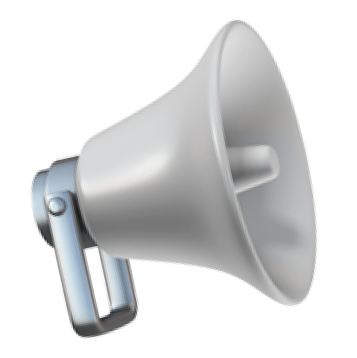Understanding the distinction between correlation and regression is essential for effective data analysis and decision-making. Each method serves a unique purpose, offering valuable insights depending on your research goals and data characteristics. By mastering both, you can enhance your ability to analyze relationships, predict outcomes, and draw meaningful conclusions from your data. Regression establishes a clear dependency, with one variable classified as dependent and the other(s) as independent. The dependent variable’s behavior is predicted based on changes in independent variables.
Correlation can be defined as a technique used in data statistics to come up with a relationship between any two or greater units of information. Regression and correlation are statistical tools that have repeatedly proven useful for businesses and research. Understanding correlation helps researchers and analysts make informed decisions based on data patterns, but it’s essential to interpret the results carefully to avoid misleading conclusions.
A Holistic Look at Bernoulli Distribution
Correlation does not imply causation, meaning that even if two variables are strongly correlated, it does not necessarily mean that one causes the other. Both correlation and simple linear regression can be used to examine the presence of a linear relationship between two variables providing certain assumptions about the data are satisfied. The results of the analysis, however, need to be interpreted with care, particularly when looking for a causal relationship or when using the regression equation for prediction. Regression, on the other hand, is a statistical method used to model the relationship between a dependent variable and one or more independent variables. It aims to find the best-fitting line or curve that describes the relationship between the variables. Regression can help predict the value of the dependent variable based on the values of the independent variables.
The Ultimate Guide to Understand Conditional Probability
For example, suppose a person is driving an expensive car then it is assumed that she must be financially well. To numerically quantify this relationship, correlation and regression are used. Correlation and regression are the two most commonly used techniques for investigating the relationship between quantitative variables. Correlation is used to give the relationship between the variables whereas linear regression uses an equation to express this relationship. For example, the 95% prediction interval for the ln urea for a patient aged 60 years is 0.97 to 2.52 units. The fitted value of y for a given value of x is an estimate of the population mean of y for that particular value of x.
- Correlation and regression are two statistical techniques commonly used to measure the relationship between two variables.
- Correlation is used when the researcher wants to know that whether the variables under study are correlated or not, if yes then what is the strength of their association.
- Predicting income, based on education makes sense, but the opposite does not.
Regression is the most effective method for constructing a robust model, an equation, or predicting a response. The correlation is the best option if you want a quick response over a summary to determine the strength of a relationship. No correlation emerges when no relationship exists between two or more variables compared. For example, intelligence quotient and shoe size show little or no relationship If you increase or decrease one variable the other will not change. The correlation coefficient which ranges from -1 to 0 to +1 is a relative indicator between two or more phenomena. When two variables move in the same direction and one increases or decreases when the other does, the two variables have a positive correlation.
- With the above discussion, it is evident, that there is a big difference between these two mathematical concepts, although these two are studied together.
- While x is referred to as the predictor or independent variable, y is termed as the criterion or dependent variable.
- Correlation analysis is best used when a researcher has to assess whether the variables under study are directly/ indirectly correlated or not.
- Correlation indicates the possibility of a relationship or association between two variables.
- As a result, though correlation and regression are both important statistical methods for examining relationships between variables, they have different functions and yields different results.
- A negative correlation exists when one variable increases while the other variable decreases.
Regression, however, adds a fitted line (the regression line) that best represents the relationship between the variables and allows for predictions. The correlation shows the pattern; the regression line adds a predictive component. A scatter diagram of the data provides an initial check of the assumptions for regression. The assumptions can be assessed in more detail by looking at plots of the residuals 4,7. If the relationship is linear and the variability constant, then the residuals should be evenly scattered around 0 along the range of fitted values (Fig. 11). The correlation coefficient exploits the statistical concept of covariance, which is a numerical way to define how two variables vary together.
Correlation measures the strength and direction of a relationship between two variables. For instance, a correlation coefficient of 0.85 indicates a strong positive relationship; as one variable increases, the other tends to rise. The use of correlation and regression depends on some underlying assumptions. For correlation both variables should be random variables, but distinguish between correlation and regression for regression only the response variable y must be random. Both correlation and regression assume that the relationship between the two variables is linear.
Mastering regression equips analysts and researchers with the ability to derive actionable insights, optimize processes, and make precise predictions based on available data. The width of the confidence interval clearly depends on the sample size, and therefore it is possible to calculate the sample size required for a given level of accuracy. These videos investigate the linear relationship between people’s heights and arm span measurements. As expected, since the correlation matrix is 0.96 we get a line with a positive slope as the curve that best fits the data.
In regression analysis, R-squared (or coefficient of determination) represents the proportion of variance in the dependent variable explained by the independent variable(s). It’s the square of the correlation coefficient (r) in simple linear regression. It bridges the gap between correlation (strength of association) and regression (predictive power). Other factors might influence the dependent variable not captured by the simple linear regression model. Non-linear relationships, outliers, or multicollinearity (in multiple regression) can weaken predictive power even with high correlation. Correlation and regression are valuable statistical techniques that help us understand the relationship between variables.








